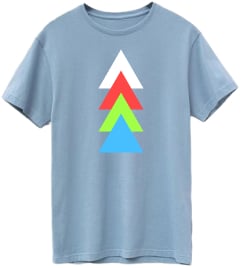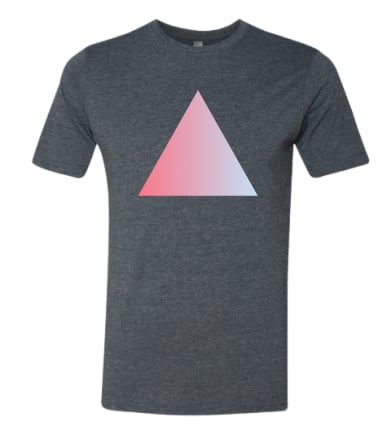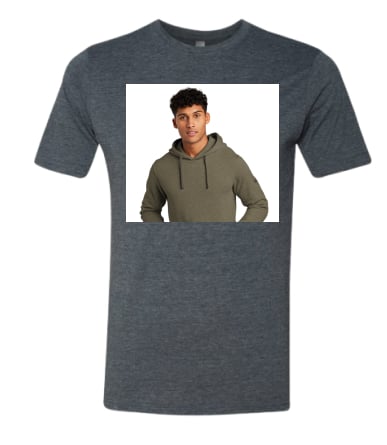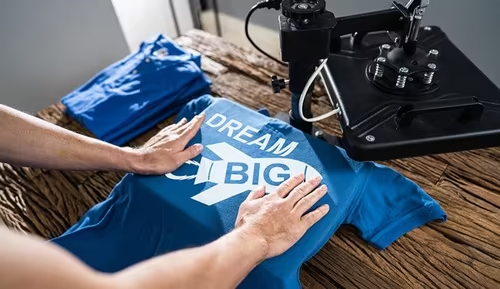
Table of Contents

Embroidery and screen printing are popular methods for customizing clothing and other items with images or designs. However, despite some similarities, the two significantly differ in cost, applications, and appearance. This article will provide a detailed guide on the difference between embroidery and screen printing.
Embroidery: What is it?
Embroidery is a method of customization that uses thread to stitch an image onto a garment using a machine. It is commonly used on various customized products, such as backpacks, towels, blankets, beanie hats, baseball hats, and shirts.
Advantages of Embroidery
- Fast Production Rate: Custom embroidery orders can be completed quickly using top-of-the-line machines.
- Suitable for All Order Sizes: Embroidered items can be ordered in bulk or small quantities without issues.
- Durable: Embroidered items/designs can last for many years without coming undone.
- Includes More Colors: Embroidered items can include a variety of colors (up to about 7 or 8 colors) without incurring extra costs.
Disadvantages of Embroidery
- Only Used on Fabric: Embroidery can only be used on fabric items, not pens, candles, or mugs.
- Costly: Embroidery can be more expensive than ink printing methods.
- Potential Snagging of Threads: Embroidered designs are durable, but the threads are susceptible to snagging if handled carelessly.
Embroidery is a great option for creating unique, custom designs for heavy cotton or fleece items. It’s especially ideal for creating high-end pieces like custom embroidered sweatpants, heavy fleece hoodies, or branded jackets where a textured, professional look is desired.
Screen Printing: What is it?
Screen printing uses either plastisol, water-based, or a number of other specialty inks to implement designs/images on various custom products. The image file is first outputted onto film positives and then placed onto a mesh and then covered in emulsion before exposure to Ultraviolet light for sealing. At this point a negative is created of the design which is then set up onto machines and uses the new screen (negative) to pass ink through only that section, creating a final product. Multiple screens are needed if the design is more than 1 color, as each color would require its own screen which is registered on the machines so each time the shirt goes around the colors lay exactly in the correct place. Screen printing can be used on various custom products, including clothing/fabric, pens, notebooks, cups and glasses, and water bottles.
Advantages of Screen Printing
- Affordable: Screen printing is one of the most affordable methods of customizing items.
- Swift Bulk Order Processing: Screen printing can be done quickly and efficiently.
- Scalable: Screen printing can be adjusted to match the size of any object and can be printed up to 33×43″ or 48×60″ sometimes even larger depending on the product and number of colors.
- Durable: Screen-printed designs are long-lasting and can work .
- Versatile: Screen printing can be used on various products and fabrics, including acrylic, polyester, spandex, modal, cotton, neoprene, and many more. It’s also a popular method for creating custom printed sweatpants, allowing for vibrant and durable designs on cotton blends and athletic fabrics.
Disadvantages of Screen Printing
- Small Orders Can be Costly: Small orders can be costly for screen printing how ever the price is the lowest at large quantities due to the initial set up cost.
- Unsuitable for Non-Flat Objects: Screen printing is unsuitable for printing on rounded objects such as hats. If you’re looking to decorate headwear, embroidery is the preferred option — especially for custom hats no minimum orders where flexibility and quality are key.
- High Initial Set Up Cost: Since each color in your artwork would require an individual film and screen the initial set up cost can be a deterrent to many.
Screen printing is a great option for anyone working on a tight budget and customizing many items in bulk. However, it may be suitable for something other than small orders.
Conclusion
In summary, both embroidery and screen printing have their advantages and disadvantages, depending on your project—whether you’re customizing corporate polos, custom Nike sweatpants, promotional tees, or team shirts.
Embroidery is best suited for fabric items and can include a range of colors, but it is more expensive than screen printing. Screen printing is versatile, affordable, and durable but may not be suitable for small orders. Choose the method that best suits your needs and budget to create unique, customized designs on your clothing and other items.
Alex Hales
Related Articles
Alex Hales
Alex Hales
Alex Hales
One Tree Planted
a tree with every online order placed.
1 Order Placed = 1 Tree Planted
In partnership with onetreeplanted.org
One Tree Planted
1 Order Placed = 1 Tree Planted
In partnership with onetreeplanted.org
Contact
- Mon - Fri | 9 AM – 5:30 PM PST
- quote@dtlaprint.com
- 4901 South Santa Fe Ave. Vernon, CA 90058
We Are Exclusively By Appointment Only.
Services
subcategories
Popular Products

Adidas Adjustable Washed Slouch Cap

Swannies - Delta Cap

Imperial - The Original Small Fit Performance Cap

Oakley - Pro-Formance Cap New

Sportsman - Five-Panel Rope Heritage Fit Cap

OTTO - 5 Panel Mid Profile Baseball Cap

OTTO - 6 Panel Low Profile Baseball Cap

Patagonia Mens Dirt Craft Long-Sleeve Jersey

Johnnie-O Mens Course T-Shirt

Johnnie-O Mens Dale 2.0 T-Shirt

Helly Hansen Mens Lifa T-Shirt

Helly Hansen Womens LIFA Crew Long-Sleeve T-Shirt

Helly Hansen Mens LIFA Stripe Crew Long-Sleeve T-Shirt

Los Angeles Apparel - L/S Baby Thermal Henley

G Fore - Mens The Maverick Hybrid Stretch Jacket

Under Armour Mens Drive Midlayer Vest

Under Armour Mens Unstoppable Jacket

Under Armour Mens Drive Storm Wind Jacket

Zero Restriction Mens Fleece Hybrid Vest

Patagonia Womens Retro Pile Vest

Patagonia Mens Synch Anorak

G Fore - Mens Melange Ice Nylon Hoodie

Under Armour Mens Playoff 3.0 Golf Hoodie

Under Armour Mens Armour Fleece Hoodie

G Fore - Mens Brushed Back Tech Terry Hoodie

Patagonia Mens Micro D Hoodie

Adidas Golf Womens Golf Hoodie

Los Angeles Apparel - MW TERRY PO HOODY 9OZ

Patagonia Terravia Tote Pack

Patagonia Black Hole Tote 25L

Los Angeles Apparel - Large Nylon Shopping Bag

Johnnie-O Lined Beach Tote

Bogg Baby Bogg Bag

Bogg Bitty Bogg Bag

Bogg Original Bogg Bag

Everybody World - Adjustable Apron

Artisan Collection by Reprime - Annex Oxford Apron with Pocket

Artisan Collection by Reprime - Recycled Bib Apron

Artisan Collection by Reprime - Artisans Choice Canvas Apron

Artisan Collection by Reprime - Four-Pocket Jeans Stitch Denim Bib Apron

Artisan Collection by Reprime - Cross Back Barista Apron with Pocket

Artisan Collection by Reprime - Calibre Cotton Canvas Bib Apron
-
Screen Printing
High-quality prints, eco-friendly options
-
Embroidery
Expert stitching for lasting impressions
-
Finishing Services
Custom details for a polished look
-
DTG – direct to garment
Detailed designs, soft feel
-
Waterbased transfer printing
Natural feel, durable designs
-
Custom-dyed merchandise
Personalized colors for unique style
resources
get a quote!
Fill out this form to help us understand your needs and respond accurately.

4
47 Brand
A
Adidas
A
Allmade
A
American Apparel
A
ANETIK
A
Artisan Collection by Reprime
A
AS Colour
B
Badger
B
Bayside
B
Beimar
B
Bella + Canvas
B
Boxercraft
C
Carhartt
C
Carmel Towel Company
C
Champion
C
Colortone
C
CORE365
C
Columbia
C
Comfort Colors
C
Cotton Heritage
D
Dyenomite
E
Econscious
E
Everywhere Apparel
F
Flexfit
F
Fruit of the Loom
G
Gildan
H
Hanes
I
Independent Trading Co.
I
Imperial
I
Infinity Her
J
Jaanuu
J
Jerzees
K
Kishigo
L
Lane Seven
L
Legacy
L
Liberty Bags
L
Los Angeles Apparel
M
M&O
M
Marine Layer
N
New Era
N
Next Level
N
Nike
N
North Face
O
Oakley
O
OGIO
O
Onna
O
OTTO
O
Original Favorites
Colors and Sizes
Thanks for subscribing!
You’ll be the first to know about exclusive offers, deals, and the latest news. Keep an eye on your inbox for your welcome email!
oops.. something went wrong!
Looks like we had a little trouble processing your subscription. Please try again or reach out to us if you need assistance
Contact Us
Call Us
Send Us A Message
Get a Quote
There is a 100 piece minimum to work with a sales rep.
For online orders
Screen Printing: 25 pieces minimum
Embroidery: 3 pieces minimum
Water-based Transfers: 1 pieces minimum
Direct-To-Garment: 1 pieces minimum
Patches: 25 pieces minimum
Office: (323) 261-8700
9 AM - 5:30 PM PST
Chat Available 9 AM - 2 AM PST
Back
Basic info
Your dedicated account rep is here to keep you updated and offer real time suggestions and project navigation every step of the way. Online ordering and live price quotes available here.
Have you ordered custom apparel & headwear before?
This will help us tailor the experience depending on your experience and know how to best support you.
Which services are you interested in?
Select one or as many of the services below you are interested in.
Do you already know what products you would like to order?
If you need help to identify the correct product for the correct demographic at the correct price point, select "I need help searching" and we will ask you a few additional questions to allow us to submit the best options for your project.
Tell us a little about your target demographic
We want to make sure your recipients will love and wear the merch you create time and time again. These questions will really help us identify the products that will best fit your audience.
Design Included in price
- Embroidery - Up to 4” x 4” or 8k stitches ( standard logo placements, +$1.50 per 1k stitches )
- Screen Print - Up to 15x18” 1-6 Colors, any larger custom quote, would need to see mock up, submit request here ( link to /contact form )
- Digital / DTG - Up to 14x16” ( +$5 for 15x18” )
- Patches - Up to 3.5” x 3.5” ( + $4.35 up to 5” x 5” )
- Waterbased Transfers - Up to 11x15” ( +$4.85 extra for any larger up to 13.5x17” )
Minimum Order Quantity
- Embroidery-3 pieces min.
- Screen Print-25 pieces min.
- Digital / DTG-1 piece min.
- Patches-25 pieces min.
- Waterbased Transfers-1 piece min.
Edit Quantity
Choose Colors & Sizes
Enter your quantity per size
Please make sure that you have reached minimum order quantity for preferred option. MOQ descriptions you can find
Finishing Services
Fold & Poly Bag
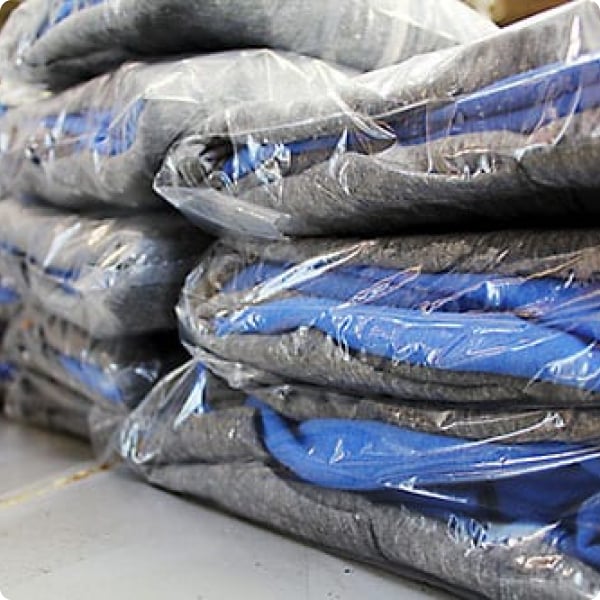
DTLA Print has an in house finishing department in its facility with trained individuals to professionally fold and bag your garments. Bags can be provided with customizable options, however we use a 1 mill flat poly bag which can be air sealed or taped shut.
$0.95/Shirt
+ 2 days
Size Sticker
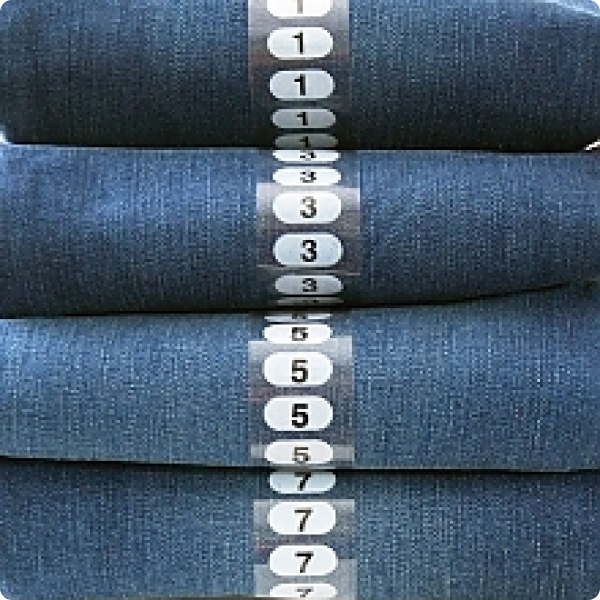
Add a size sticker to the outside of each garment or poly bag to easily identify the size of a garment. Packages do come separated by size how ever many retailers and fulfillment centers do require these stickers.
$0.65/Shirt
+ 2 days
Custom UPC Label
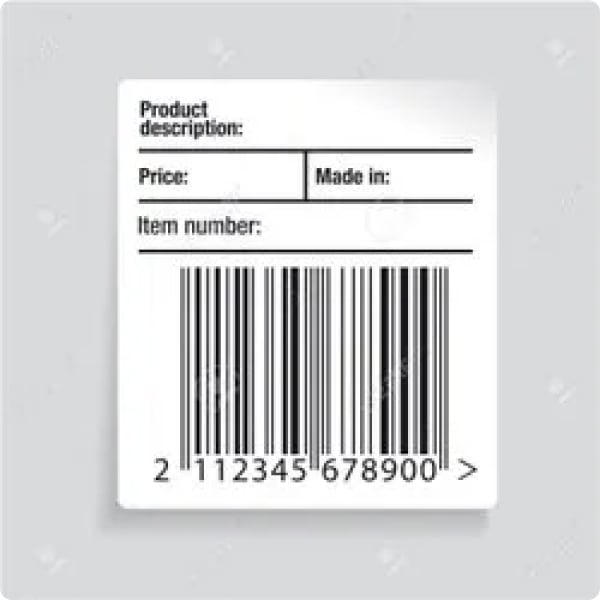
We will print & apply a custom UPC label for any retailer, 3rd party logistics or fulfillment partner you work with.
$0.75/Shirt
+ 2 days
Hang Tag
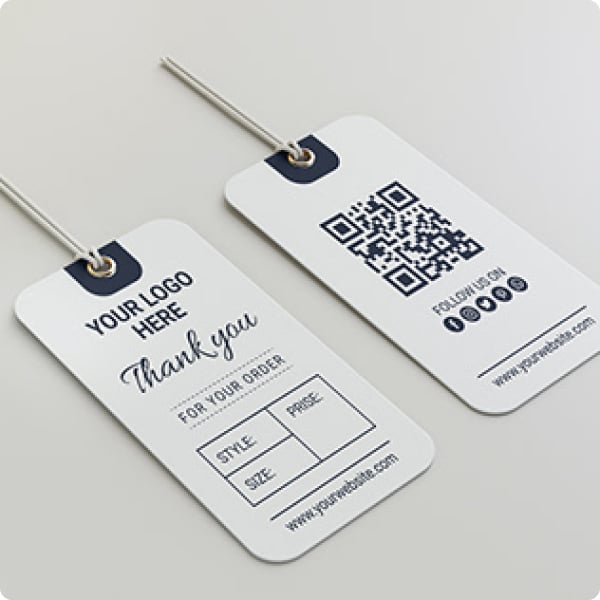
Incorporating price tickets and hang tags securely with a pin, while offering a diverse array of sizes, colors, and finishes, significantly enhances the perceived quality and overall appeal of your garment. Additionally, not only elevate the garment’s perceived value but also provide essential product information, giving your customers a more informed and satisfying shopping experience.
$1.8/Shirt
+ 14 days
Woven Main Label
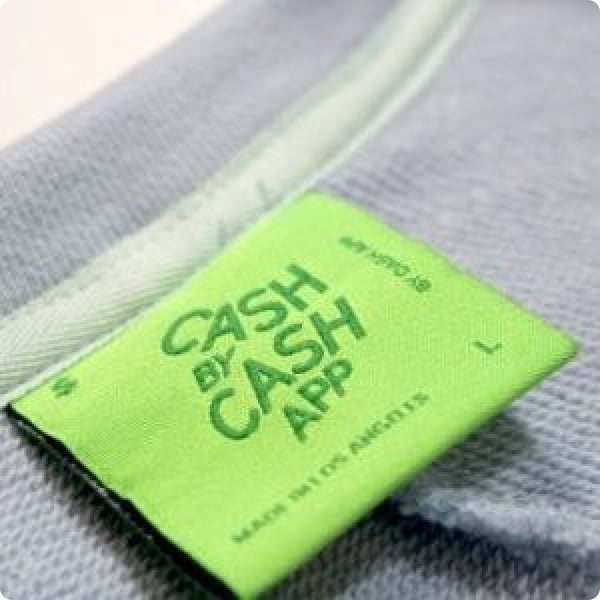
Create a fully custom woven main label. Includes the actual label itself and the sewing of the label. We will reach out to discuss the woven label material choices, shapes, and design. Please note this does add extra business days to the production time.
$2.75/Shirt
+ 14 days
Woven Hem Label
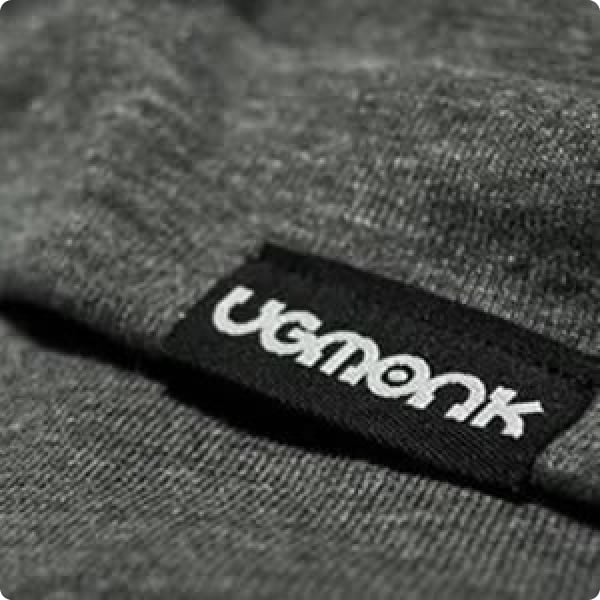
Create a fully custom woven hem label. Similar to the main label, this includes the actual label itself and the sewing of the label. We will reach out to discuss the woven label material choices, shapes, and design. Please note this does add extra business days to the production time. Hem labels go anywhere except the neck label of a garment.
$1.85/Shirt
+ 14 days
Design guidelines
Embroidery
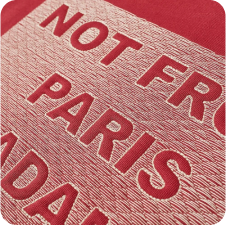
Standard Size
4.5” W but larger can be requested
Max Size
Not common, but possible
File Formats
PSD, AI, PDF, EPS, PNG
Max Thread Colors
12
Specialty Threads
Metallic & 3D Puff
File Specs
Scaled to size or larger with transparent background
Screen Print
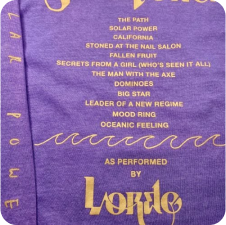
Standard Size
3” - 12” depending on location
Max Size
15x18” *special request
File Formats
PSD, AI, PDF, EPS, PNG
Max Colors
8
Specialty Inks
3M Reflective, Water-based, Plastisol, Puff, Etc...
File Specs
Scaled to size or larger with transparent background
Digital / DTG
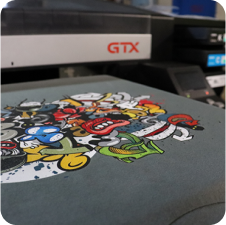
Max Size
15x18”
File Formats
PNG preferred, ( also acceptable; PSD, AI, PDF, EPS, JPG )
Max Colors
Unlimited
File Specs
300 DPI scaled to size or larger with a transparent background
Patches
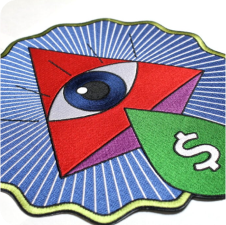
Max Size
10x13.5”
File Formats
PNG preferred, ( also acceptable; PSD, AI, PDF, EPS, JPG )
Max Colors
Unlimited
File Specs
300 DPI scaled to size or larger with a transparent background
Waterbased Transfers
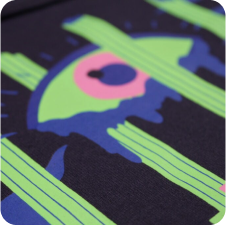
Max Size
15x18”
File Formats
PNG preferred, ( also acceptable; PSD, AI, PDF, EPS, JPG )
Max Colors
Unlimited
File Specs
300 DPI scaled to size or larger with a transparent background
Upload Design
Upload Mockups
Don’t worry! Every order is triple checked even if it does not look perfect in this demo.
Do you want us to remove the background?
Our new AI tool will remove the background from the image 100% automatically and free.
Max File Size: 15 MB. For any files larger than 15MB please send via wetransfer.com or dropbox.com and share with sales@dtlaprint.com
Order option
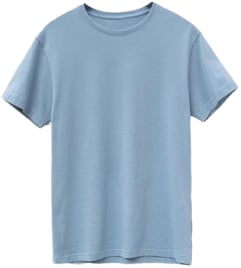
We refer to “Blanks” as garments or products with out any decoration, logo, modification, etc... Essentially it is a product that has yet to be customized.
Blanks are typically ordered to test the fit, fabric, & feel but can also be purchased in bulk to customize on your own or be worn blank.
# of Colors
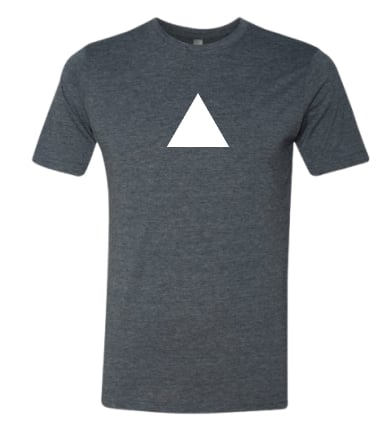
1 Colour
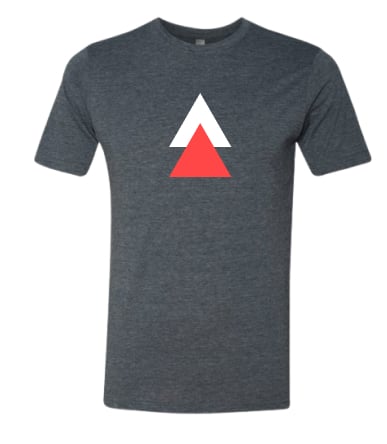
2 Colour
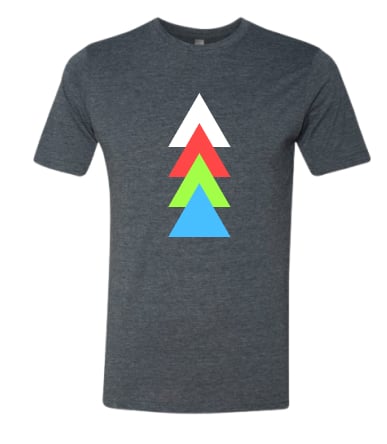
4 Colour
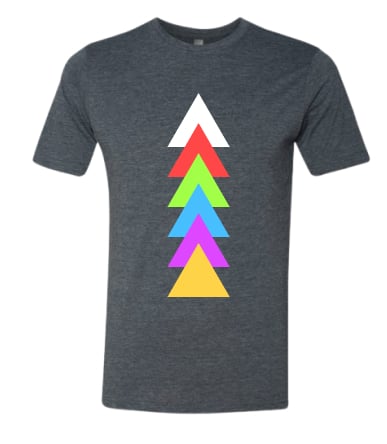
6 Colour
In screen printing, this is a reference to how many different colors are found in your design. We don’t charge for the base layer so only count the different colors you find in your design / logo.
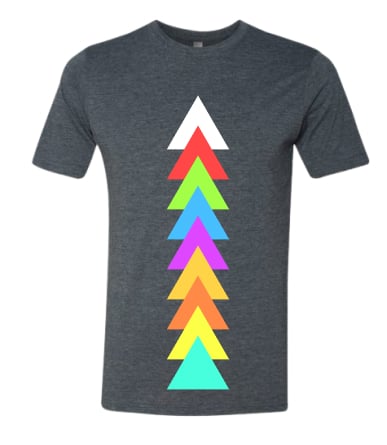
More than 6
We recommend the Digital or Waterbased Transfer Print method for
Position
Tell us where on the garment you would like the specific design or logo and your account rep will create you a proper mock up to ensure that the design is printed as you intended.
Don’t worry if you don’t place it perfectly, we triple review each order to ensure satisfaction.
Front
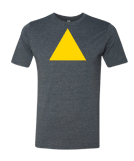
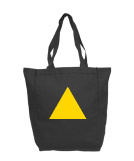
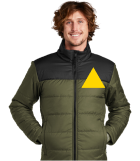
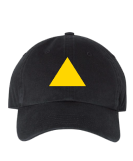
Back
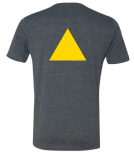

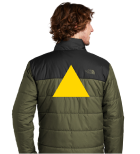
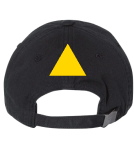
Left

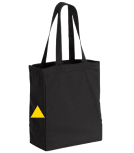
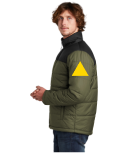
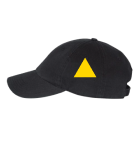
Right

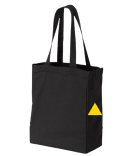
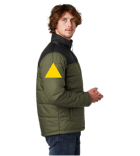
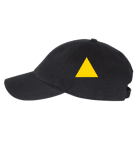
Neck Label

Decoration Methods Explained
Fabric
Minimums
Photo Quality
Set up Fees
Large Volume
Low Volume
Specialty Inks
Eco-Friendly Inks
Black Ink
Pantone Matching
Color Vibrancy
Wash
Consistency
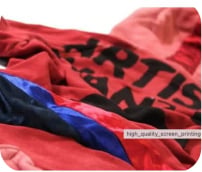
Screen Printing
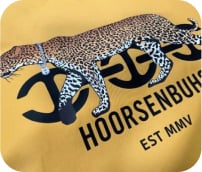
Water-based Transfer
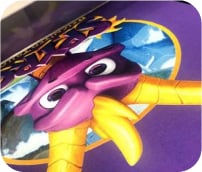
Direct to Garment
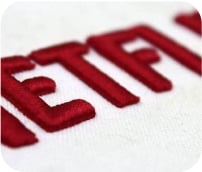
Embroidery
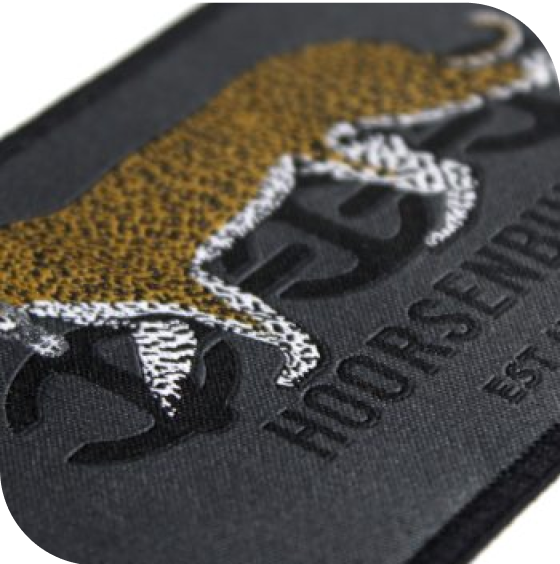
Patches
Screen Printing
Water-based Transfer
Direct to Garment
Embroidery
Patches
View Fabric + Ink Chart
Any
Recommend 100% Cotton For Best
Any
Any
25-100 pieces depending on # of colors
1 piece
1 piece
3 pcs
25 piece
A-to C+ depending on image
A+
A+
N/A
N/A
Per Color
Free
Free
Included
Included
Price Lowers Significantly
Price Lowers
Price Remains after 1k units
Small drop in pricing as quantities increase
Small drop in pricing as quantities increase
Expensive Initial Set Up Costs
Easy/No Set Up Free Pricing
Easy/No Set Up Free Pricing
Higher per unit price at low volume
Higher per unit price at low volume
Yes
No
No
3D Puff & Metallic Threads
3D Puff & Metallic Threads
Yes
Yes
Yes
N/A
N/A
Most Rich & Dark Blank Prints
Jet Black/100% Black Available
Black Prints Max Out At 90% Vibrancy
N/A
N/A
Yes
Yes
No
N/A
N/A
Best
Amazing Results on Any Fabric
Best on 100% Cotton
Vibrant
Vibrant
A+
A+
A- / B+ Depending on Fabric Blend
A+
A+
A+
A+
A+
A+
A+
Screen Print - Ink Types
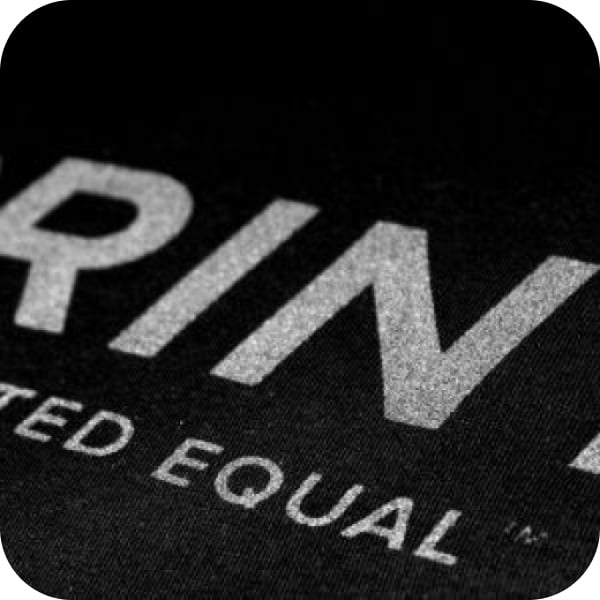
Eco friendly inks + screen prints are the true green alternative to screen printing. These inks replace traditional harmful inks and are 100% PVC and phthalate free.
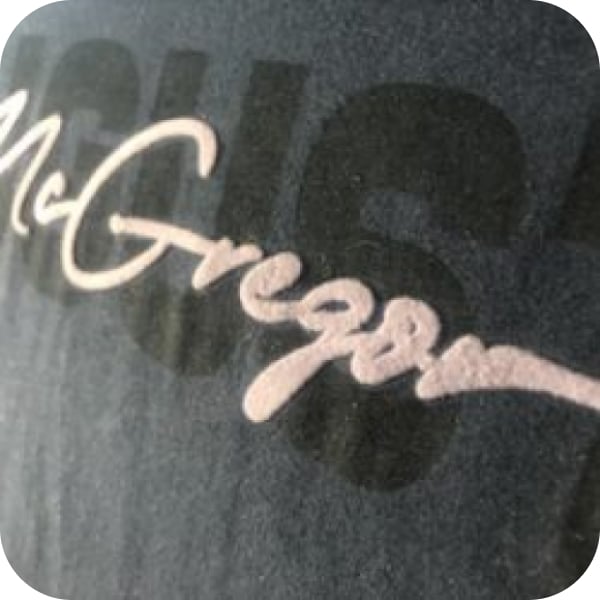
Mostly used for athletic/activewear fabrics such as nylons, spandex, polyesters, rayons, lycra, that have a lot of stretch but can also be screen printed on other blends for different textures. These inks will make your prints stretch with the fabric and do not create cracks or creases when stretched. These should be printed on all sports jerseys, yoga apparel, athletic uniforms, and activewear.
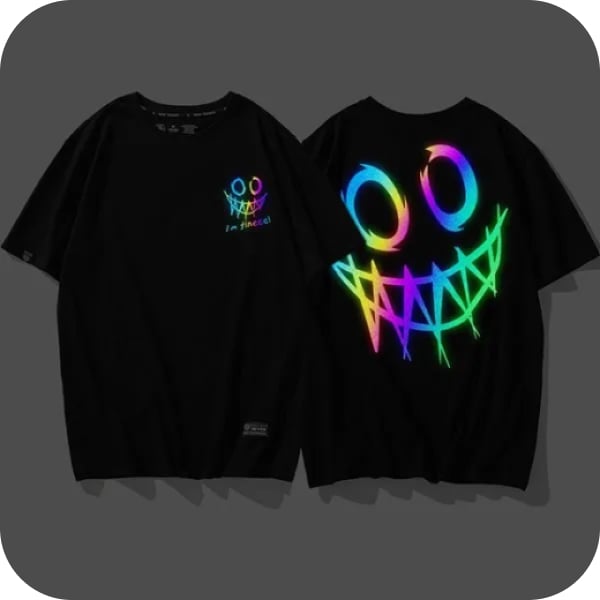
We offer the 3M reflective ink prints as well as a standard reflective print that come in either a water-based (eco-friendly) or plastisol-based ink with the unique ability to reflect once a light source is aimed at the print. Popular uses for this new ink includes police departments, fire departments, E.M.S., and other safety professions. Has recently become extremely popular in the skate, surf, urban, and street apparel industries.
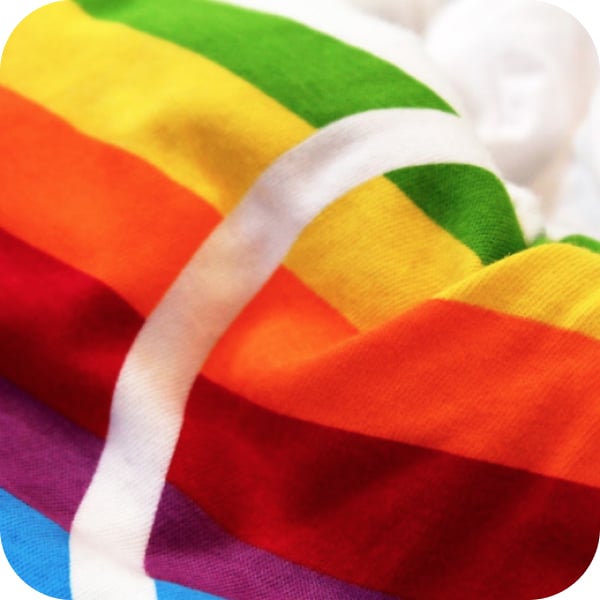
Well known for their soft feel and vibrant colors they produce when printed onto t-shirts and other textiles. When printed water based inks leave no hand feel behind so you can feel the fibers of the garment.
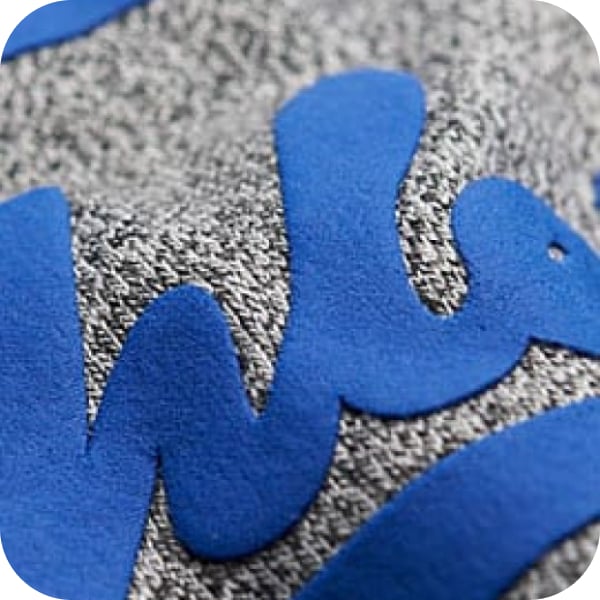
Inks that expands and rises when heated, giving a three dimensional look with a raised feel. Any Los Angeles t-shirt printer can buy inks and print them, but the real beauty and art of screen printing on t-shirts comes when you can mix inks correctly and accurately. Controlling how the puff inks actually puff is one example.
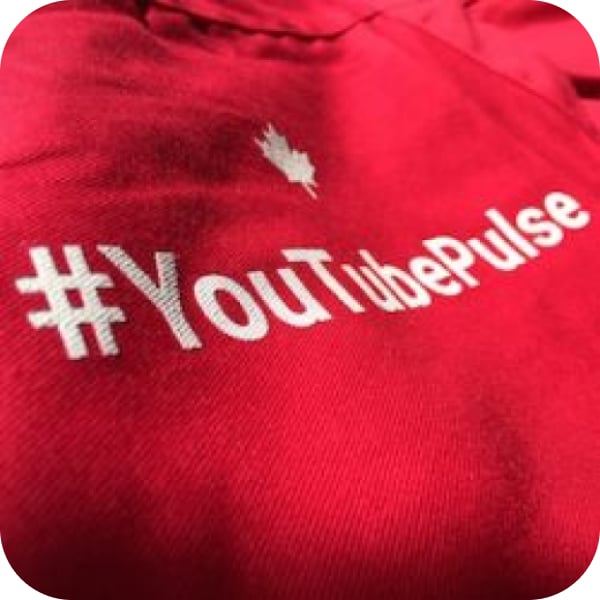
Silk screen t-shirt printing with plastisol is the oldest and most commonly used ink across the market to screen print your custom t shirts. The misconception how ever is that all inks are the same.
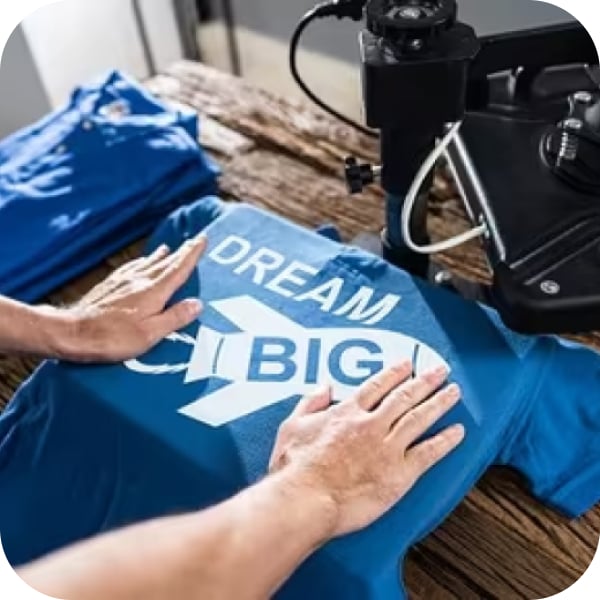
Specialty Order Off-Site
Available in both water based and discharge inks. The ink actually cracks in pieces the way you want it to so no two pieces will be alike. Great for vintage washed out looks while still brand new. This is custom silk screen printing at its best.
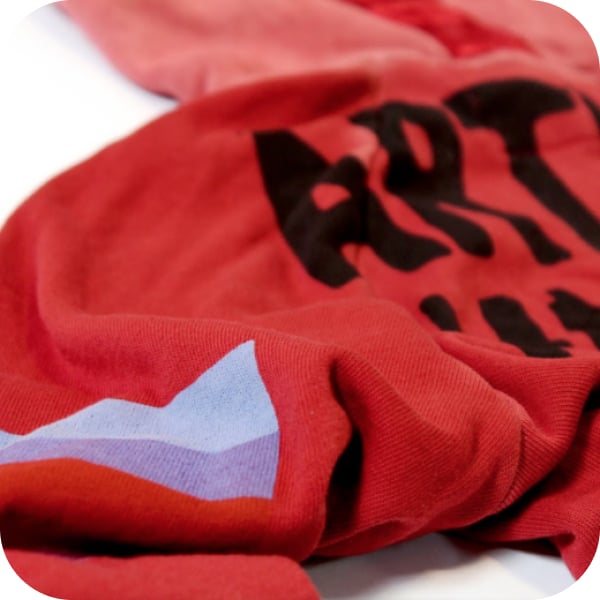
Specialty Order Off-Site
Perfect for creating custom silk screened T-shirts right here in Los Angeles. High Density inks can be matched to any color and rises in the drying process to create a 3D look. Inks can be raised to your desired height or width and can be printed with other high density inks of different sizes.
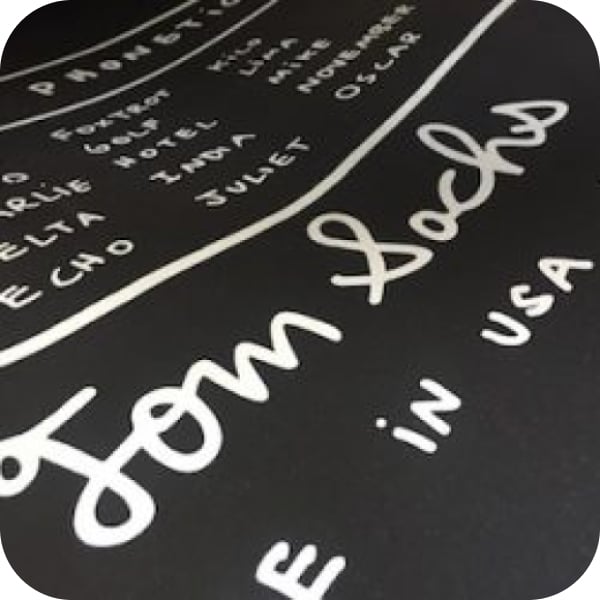
Specialty Order Off-Site
Burnout is a special screen printing process we use to removes the cotton fibers from a shirt, leaving only the polyester intact. It's perfect if you want to give your T-shirt designs that really cool see-through look.
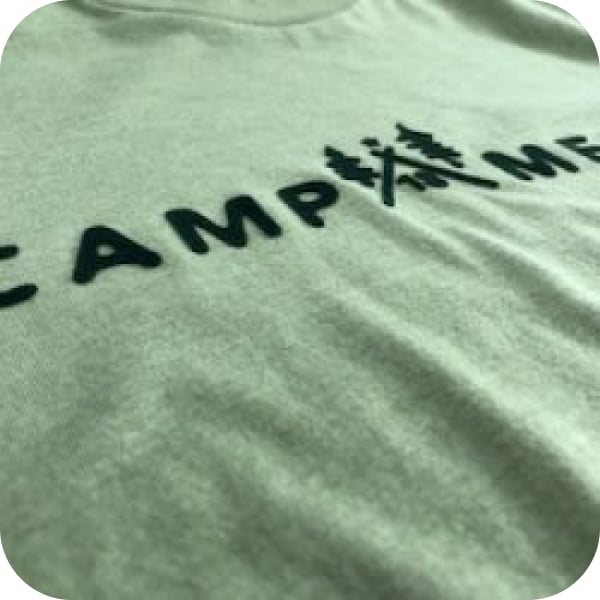
Specialty Order Off-Site
Flocking screen printing can add a new dimension to your materials. Tiny particles of fiber are applied to a material with an adhesive, adding a suede-like or velvet texture to the surface. We color the fiber according to your designs, and you end up with products that stand out from the rest.
Water-based. w/ Base
Water-based. w/ Base
Oil Based. w/ Base
Oil Based. w/o Base
High Density
Puff
Stretch
Silicone
100% Cotton
90% Cotton
10% Poly
50% Cotton
50% Poly
Tri-Blends
100%
Polyester
95% Poly 5%
Spandex
What is Tax Exempt
Tax exemption is the reduction or removal of a liability to make a compulsory payment that would otherwise be imposed by a ruling power upon persons, property, income, or transactions. Tax-exempt status may provide complete relief from taxes, reduced rates, or tax on only a portion of items. Examples include exemption of charitable organizations from property taxes and income taxes, veterans, and certain cross-border or multi-jurisdictional scenarios.
*Only orders shipped with in California are charged tax unless a a valid CA resale form is provided.
How fast do you want us to produce your order?
Production time is separate from shipping
If you're in a hurry to receive your order, we offer an expedited service to fast-track the production process. While this option incurs additional charges, it ensures you get your product sooner. However, if time is not a pressing concern, you can stick to our standard production schedule at no extra cost. We believe in providing you with the flexibility to choose the timeline that best suits your needs.
Request a Callback
Please provide the best contact number for our team to reach out to you on, your account rep will reach out within 24-48 business hours.
A 100 piece minimum is needed for an account rep to handle your order.































































